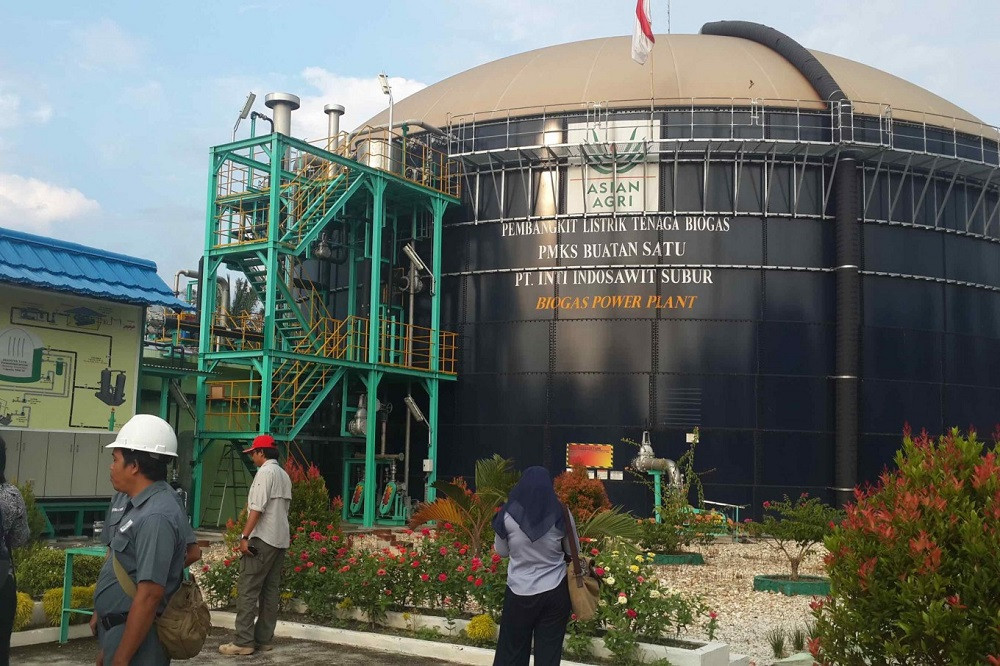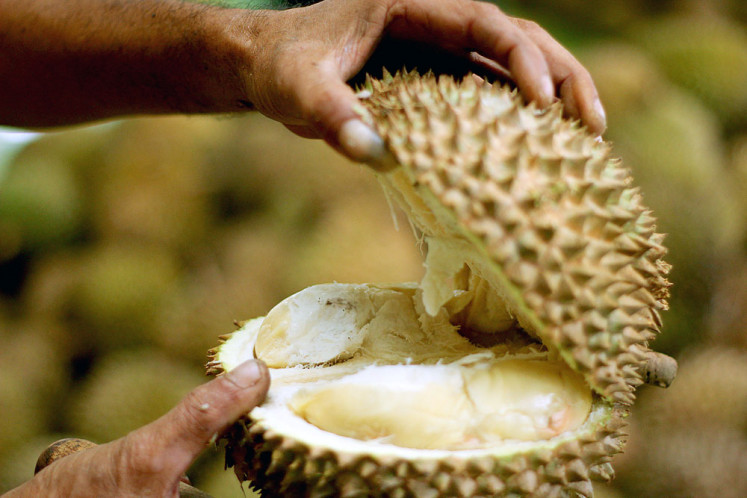Popular Reads
Top Results
Can't find what you're looking for?
View all search resultsPopular Reads
Top Results
Can't find what you're looking for?
View all search resultsThe challenge of using palm oil mill effluent to generate electricity
The current POME treatment trend is now gearing toward biogas capture technology and integrated POME treatment system with the ultimate aim of achieving zero discharge concept in the palm oil mill.
Change text size
Gift Premium Articles
to Anyone
T
he steady increase in palm oil production will inevitably increase palm oil mill effluent (POME) as an inevitable by-product that causes serious environmental damage if discharged directly into the environment. This is mainly due to its high concentration of Chemical Oxygen Demand (COD), which has a high organic compound content.
Nevertheless, POME is a great source for biogas production to produce methane gas. Therefore, POME pollution abatement coupled with biogas capture and utilization are vital to promote sustainable development for the palm oil industry.
The current trend regarding POME is toward biogas capture technology and an integrated POME treatment system with the ultimate goal of zero discharge in the palm oil mill. This can be achieved by integrating several bioprocesses with the aim to transform POME into value-added products.
Key challenges for the operators of biogas plants include operational aspects, potential explosions, corrosion hazards and greenhouse gas (GHG) emissions. Therefore, safety and operational risk mitigation in operating biogas trapping facilities is vital. The biogas plant operators need to ensure a stable operation while managing seasonal changes in POME characteristics.
Close monitoring of biogas and power generation systems during the operation and maintenance are equally important. Collaboration with industry and academia to produce commercial data to show the efficiency of the biogas technology may improve millers’ confidence in investing in new technology and play and an important role in knowledge transfer between industry and academia.
In addition, we have to admit one of the key challenges for the palm oil millers to build biogas plants for power generation in the palm oil mills is its relatively high investment cost as compared to the conventional ponding system. A survey reveals that many palm oil mills are not willing to acquire and adopt advanced POME treatment technology (Yahaya and Lau, 2018).
Many mill owners have complained that there are no clear-cut biomass and biogas policies or sufficient incentives to convince them to venture into methane capture projects. Besides, the procedural and approval processes for developing biogas plants at palm oil mills are quite arduous and currently require overly detailed technical information. This clearly indicates that mill owners need attractive incentives and government assistance to adopt new technologies.
A more concerted governmental effort is required in processing applications, facilitating and coordinating nationwide biogas implementation under the current set-up. It is also difficult to connect those biogas plants to the national grid, especially for palm oil mills located in rural areas that are far from the interconnection point, thereby increasing the risk of power loss.
Longer distances will increase the connection cost and power loss. To overcome this, those palm oil mills that are located near to each other but far away from the national grid interconnection point could connect their biogas plants to form a mini-grid for rural application.
First, this can assist in educating and creating awareness on engineering aspects of grid connections, and second, it can deal with policy intervention to ensure smooth implementation.
Obviously, treating POME in a sustainable manner by capturing biogas is vital to transforming the palm oil industry into a greener industry. Nevertheless, there are barriers that hinder palm oil millers from adopting advanced integrated POME treatment systems. These are closely related to technology, finance, governance and grid connectivity.
With stronger support and more financial assistance and stimulus from the government, it is envisaged that all palm oil mills will be equipped with biogas facilities in the near future. While most researches are working on POME treatment via end-of-pipe processes, it is a good idea to consider a cleaner production to produce more methane and continue reducing the main wastewater source in the milling process.
***
The writer is a national environmental analyst and lecturer at the University of Indonesia in Depok, West Java.










